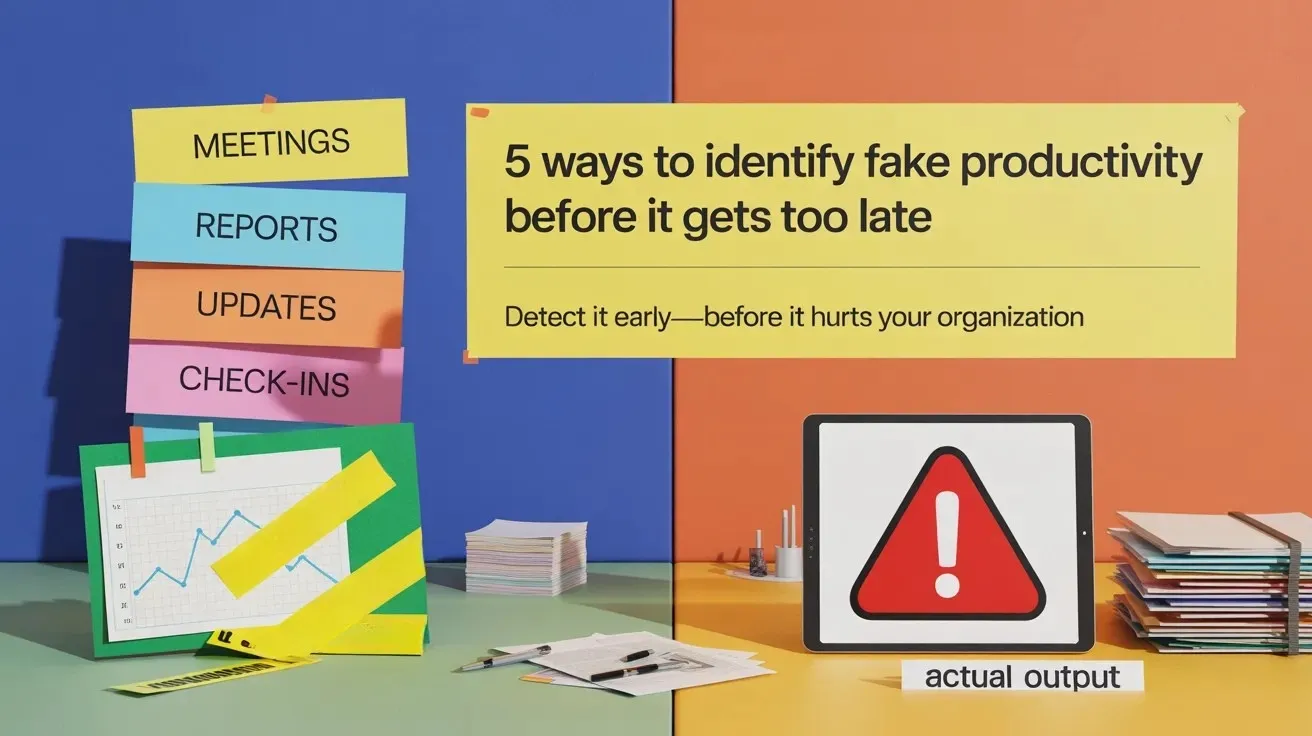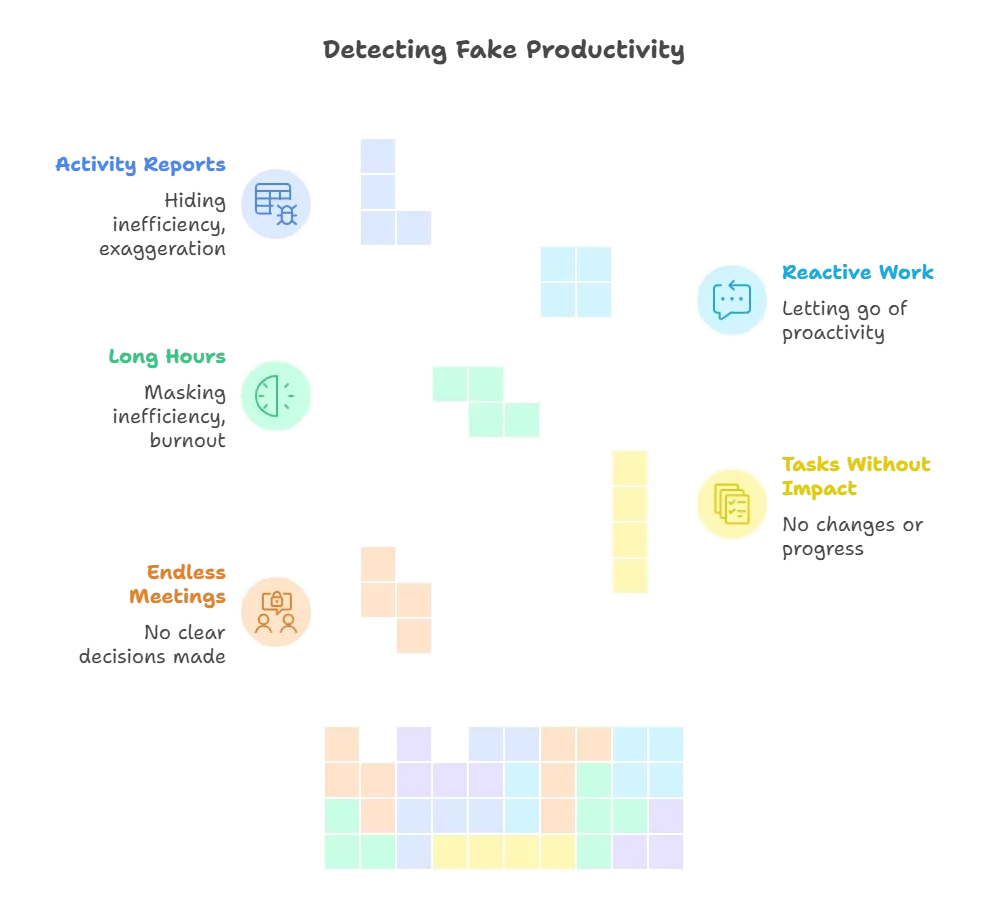5 Ways To Identify Fake Productivity Before It Gets Too Late

Key Takeaways
-
Unnecessary meetings, low-impact work, and prolonged working hours are clear signs of inefficiency.
-
Finding out the real impact of each work helped filter out busywork from real progress.
-
Automated productivity insights replaced biased self-reporting with objective data.
My past self thought that being busy meant insane productivity, but it cost my business dearly.
That’s when I realized the real problem was that we were just working, not being productive. Fixing this wasn’t optional; if I didn’t act, we risked burning out while standing still.
What I did later completely changed my team, and it should work for you too!
5 Ways I Detect Fake Productivity
The shift for me came when I realized that output without impact is wasted energy. That’s when I started diving deeper into how my team - and I myself - were spending time.
Here’s how I learned it the hard way:
1. Endless Meetings Are Setbacks
Don’t get me wrong, meetings are absolutely crucial for collaboration, but they become a chore when you don’t set boundaries.
That’s why I try to follow this now: if a meeting doesn’t result in a clear decision, action item, then it was just lost productivity.
We cut down on meetings by half and leaned on transparent time tracking and dashboards (like the ones Apploye offers) to keep everyone updated asynchronously.
Letting go of meetings directly impacted our productivity positively, and we had more time to brainstorm effectively.
Track time, not meetings
2. Tasks Completed Without Impact
One of the clearest signs of fake productivity is when tasks get checked off, but you don’t see any changes.
I saw this with product feature requests - we were shipping small tweaks rapidly, but core customer problems remained unsolved.
On paper, the backlog looked like it was shrinking. In reality, churn rates stayed the same.
That’s when I learned: not all completed tasks are equal. Busywork is not progressing. So, you should also be careful when your team is completing tasks after tasks, but you don’t see the clogs moving.
See real impact with task tracking
3. Working Long Hours To Mask Inefficiency
Early on, I was guilty of this myself. I’d log 10-hour days and feel proud. But exhaustion didn’t mean productivity. It meant I was working against my own energy cycles and prioritizing meaninglessly.
When I noticed employees doing that consistently for days, I knew they were guilty of the same.

We shifted focus to tracking employee and their outputs, not hours. That data helped us optimize, so people could achieve more in less time instead of burning out.
We also started keeping track of task progress. By checking our productivity tracker, we identified each individual's limitations and set examples for prevention.
Track real results, not just hours worked
4. Reactive Work Means Letting Go of Proactivity
Previously, all of the time spent in reactive work led me to believe I was as proactive as Elon Musk!
However, my self-realization only meant so much if my team couldn’t follow it.
So, we fixed this by introducing structured focus blocks and fixed durations for the projects that actually created impact. This small shift changed the rhythm of our week.
Suddenly, progress became visible instead of being buried under endless quick replies.
Get insights to work smarter
5. Mistaking “Activity Reports” For Real Insights
I once relied heavily on spreadsheets and daily standup reports to measure productivity. But these reports often exaggerated activity while hiding inefficiency.
A developer might show 20 commits in a day, but none of them actually fixed the root issue. A marketer might share 10 campaign drafts, but none improved conversion.
That’s when I realized that manual reporting often tells you what people want you to see, not what’s really happening. We switched to automated insights through Apploye’s real-time productivity analytics, which gave us the real story without the performance theater.
Final Thoughts
Fake productivity feels like progress, but it quietly holds teams back. But when you proactively set a target with real impact, actual productivity boosts!
So, ask the right questions, celebrate the real wins, and let go of those who hold you back. At the end of the day, everyone should be accountable for their work.
Start tracking real productivity

